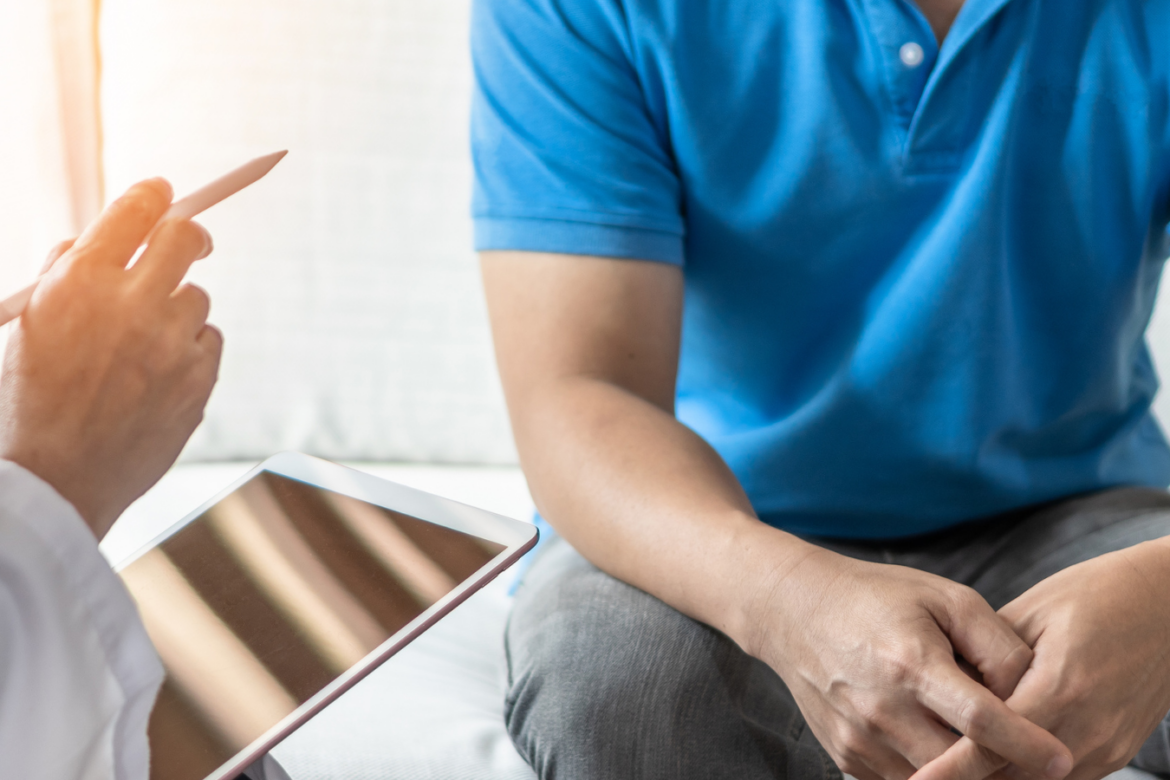Stretching for Pelvic Pain: Optimal Men’s Health Includes a Well-functioning Pelvic Floor
Many people think that pelvic floor physical therapy is for just women after they have children to help them regain control over their bladder.
While it is true that many women find improved control over their bladder with pelvic floor physical therapy, pelvic floor physical therapy can be helpful to men too. Pelvic floor physical therapy is also commonly recommended to men suffering from prostatitis, pudendal neuralgia, prostate cancer, benign prostatic hyperplasia (BPH), and pelvic pain. Research continues to grow in each of these areas, demonstrating the positive influence pelvic floor physical therapy has on each of these diagnoses.
What is the pelvic floor?
The pelvic floor is a group of muscles in the base of the pelvis that supports the internal organs and maintains urinary and fecal continence.
[/et_pb_text][et_pb_image src=”https://freedompt.com/wp-content/uploads/2023/06/nina.png” alt=”Stretching for Pelvic Pain: Optimal Men’s Health Includes a Well-functioning Pelvic Floor” title_text=”Stretching for Pelvic Pain: Optimal Men’s Health Includes a Well-functioning Pelvic Floor” _builder_version=”4.21.0″ _module_preset=”default” global_colors_info=”{}”][/et_pb_image][et_pb_text _builder_version=”4.21.0″ _module_preset=”default” global_colors_info=”{}”]
This muscle can be restricted and have myofascial trigger points that refer to other areas of the body. It is common to see that there is a pain in the scrotum, testicles, penis, and abdomen radiating from a myofascial trigger point in the pelvic floor muscle. Commonly, this muscle will refer pain to another area, and the scrotum, testicles, penis, and abdomen are healthy. This phenomenon of referred pain can be confusing to the patient, as the pain generator is not the organ but rather a muscle nearby. Other symptoms that often accompany pelvic pain referred from the pelvic floor are constipation, erectile dysfunction, urinary urgency, and urge incontinence.
How does physical therapy help the male pelvic floor?
A physical therapist that has experience with male pelvic floor dysfunction plays a critical role in helping you reduce your pelvic pain.
Your therapist will perform a thorough examination of your spine, hips, pelvis, and attaching musculature. During this examination, your therapist will look at how you move as well as determine if the muscles of the hips, back, and pelvis are strong as well as flexible. Your therapist will also help you determine which muscles and /or nerves are contributing to your pain. Once the source of the pain is identified a home program for improving the mobility of the affected muscles will be developed. Learning how to release and stretch the pelvic floor can be very helpful in reducing pelvic pain. The direct pressure on the myofascial trigger point is an effective technique for reducing tension in the trigger points, as well as intramuscular dry needling.
What can be done?
Therapists trained in intramuscular dry needling techniques for the pelvic floor may discuss using this technique as a quick and effective way of reducing myofascial trigger points and pain.
In addition to direct pressure and intramuscular dry needling, stretching the area of the pelvis can help to reduce pain as well as help calm the nervous system. A few stretches that can be helpful for pelvic pain are demonstrated below.
[/et_pb_text][/et_pb_column][/et_pb_row][et_pb_row column_structure=”1_5,1_5,1_5,1_5,1_5″ _builder_version=”4.21.0″ _module_preset=”default” global_colors_info=”{}”][et_pb_column type=”1_5″ _builder_version=”4.21.0″ _module_preset=”default” global_colors_info=”{}”][et_pb_video src=”https://freedompt.com/wp-content/uploads/2023/06/diaphragmatic-breathing.mp4″ _builder_version=”4.21.0″ _module_preset=”default” global_colors_info=”{}”][/et_pb_video][/et_pb_column][et_pb_column type=”1_5″ _builder_version=”4.21.0″ _module_preset=”default” global_colors_info=”{}”][et_pb_video src=”https://freedompt.com/wp-content/uploads/2023/06/piriformis-stretch.mp4″ _builder_version=”4.21.0″ _module_preset=”default” global_colors_info=”{}”][/et_pb_video][/et_pb_column][et_pb_column type=”1_5″ _builder_version=”4.21.0″ _module_preset=”default” global_colors_info=”{}”][et_pb_video src=”https://freedompt.com/wp-content/uploads/2023/06/deep-squat.mp4″ _builder_version=”4.21.0″ _module_preset=”default” global_colors_info=”{}”][/et_pb_video][/et_pb_column][et_pb_column type=”1_5″ _builder_version=”4.21.0″ _module_preset=”default” global_colors_info=”{}”][et_pb_video src=”https://freedompt.com/wp-content/uploads/2023/06/childs-pose.mp4″ _builder_version=”4.21.0″ _module_preset=”default” global_colors_info=”{}”][/et_pb_video][/et_pb_column][et_pb_column type=”1_5″ _builder_version=”4.21.0″ _module_preset=”default” global_colors_info=”{}”][et_pb_video src=”https://freedompt.com/wp-content/uploads/2023/06/happy-baby.mp4″ _builder_version=”4.21.0″ _module_preset=”default” global_colors_info=”{}”][/et_pb_video][/et_pb_column][/et_pb_row][et_pb_row _builder_version=”4.21.0″ _module_preset=”default” global_colors_info=”{}”][et_pb_column type=”4_4″ _builder_version=”4.21.0″ _module_preset=”default” global_colors_info=”{}”][et_pb_text _builder_version=”4.21.0″ _module_preset=”default” global_colors_info=”{}”]
Your therapist can also help you determine the cause of the pelvic floor dysfunction. This will help ensure that the pain does not return. Commonly pelvic floor dysfunction can be driven by poor posture, high-stress levels, a sedentary lifestyle, prostate surgery, spine surgery or dysfunction, a history of physical or emotional trauma, and an injury to the spine or pelvis such as a fall. Pelvic physical therapy is not just for women. Having a healthy pelvic floor will optimize your health and well-being.
More information and to schedule your appointment with one of our Pelvic Health Specialists can be found at freedompt.com

